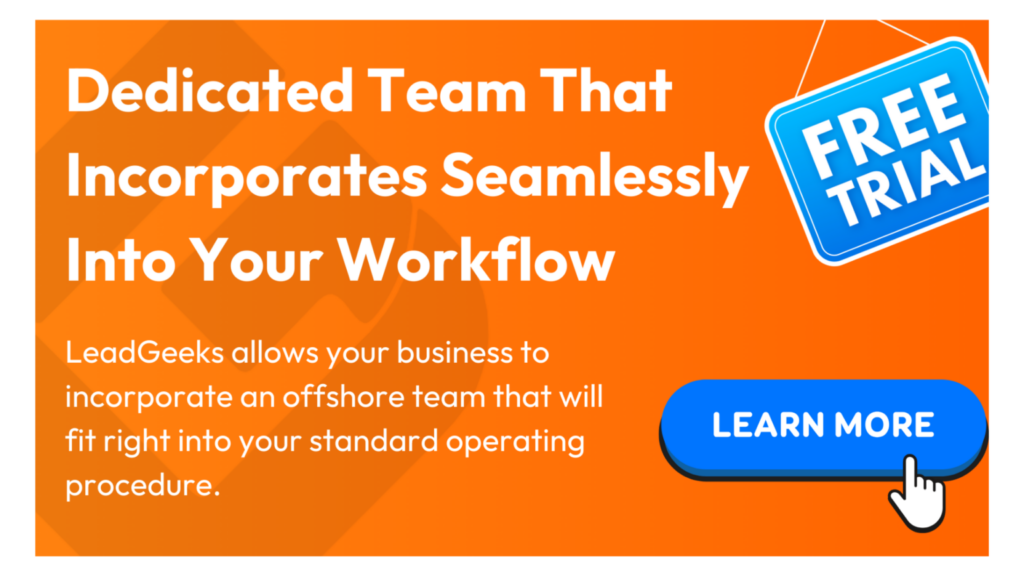Written by Gabriela Loupatty, Intern at LeadGeeks, Inc.
Rise of AI Marketing
The use of AI in used in many areas of the world as it’s becoming more streamlined this year. No surprise, that this also affect the area of sales and marketing. If you’re leading a B2B marketing team in 2025 and still relying on manual lead tracking, fragmented outreach, or guesswork in campaign planning, you’re likely missing valuable growth opportunities. These challenges are common, especially in high-tech industries where the sales cycle is long, the product is complex, and the buyer journey is rarely straightforward.
The good news is that you’re not alone and you’re not without solutions. Today’s AI marketing tools are designed to solve these exact problems. Adopting AI is not about replacing your marketing team. It’s about empowering them with smarter tools, sharper targeting, and real-time insights that lead to better results.
We know how overwhelming AI adoption can feel. That is why this guide breaks it into real phases so you can focus less on tools and more on outcomes. Whether you’re a CMO at a SaaS firm or a Marketing Ops lead in a STEM-based company, this guide will help you streamline your operations, increase conversion rates, and prepare your marketing system for the future.
Step 1: Audit Your Current Marketing and CRM Systems
Before you implement AI marketing solutions, take a clear look at where you are today. A detailed audit helps identify the gaps in your systems, workflows, and tools. This step is essential for setting a strong foundation before introducing any AI tools.
Here are the key questions to explore:
- Which channels are generating the most qualified leads?
- How accurate and up-to-date is the data in your CRM?
- Where are your workflows still manual and slowing down progress?
- Are your lead scoring and segmentation methods consistent and effective?
These questions will help you decide where AI marketing tools can deliver the biggest impact. They also ensure better coordination between your sales, marketing, and tech teams as you move forward.
To make the audit actionable:
- Map your full customer journey from awareness to conversion. Reconfirm your ICP
- List your current tools for CRM, email, content, and analytics
- Highlight where leads are being lost or delayed across the funnel
No system is perfect. The most successful AI strategies often start with incomplete data and a clear goal.
Step 2: Define Specific Goals That AI Can Help You Achieve
Using AI marketing effectively starts with knowing your most urgent challenges. Once the audit is complete, turn your attention to measurable outcomes.
Ask yourself:
- Do you want to improve your conversion rate from MQL to SQL?
- Are your teams spending too much time qualifying leads manually?
- Would you benefit from shortening the sales cycle?
Once you define your goals, you can align them with the right AI-powered features. Below are a few examples:
| AI Capability | Use Case |
| Predictive Lead Scoring | Identify leads most likely to convert based on behavior and company data |
| Personalized Content | Adjust messages across your site and emails for each visitor or segment |
| Email Sequence Optimization | Improve open and click-through rates by testing subject lines and CTAs |
| Automated Follow-Ups | Send the right messages at the right time without manual work |
| Campaign Performance Insights | Get data-backed recommendations on where to improve your outreach |
For example, in a project with a biotech software company, our team replaced manual lead qualification with an AI-based model trained on past closed-won deals. This system reviews more than 40 variables and now delivers a daily shortlist of leads with high conversion potential. As a result, the team cut lead scoring time by over 70 percent and focused their efforts on deals that mattered.
What Will People Search?
This blog answers common search queries such as:
- How to use AI marketing in B2B
- Best AI tools for B2B marketing teams
- Steps to build an AI marketing engine
- How to improve lead conversion using AI
The content is aligned with the actual intent behind those searches. It provides practical, clear, and specific steps for marketers who are actively seeking to implement or improve AI marketing within their current system.
Step 3: Choose AI Tools That Match Your Goals and Infrastructure
Before choosing any AI marketing tool, evaluate your current tech stack. Consider your CRM, email platforms, analytics tools, and content systems. The best AI tools are the ones that integrate smoothly into your existing workflows and enhance your performance, not disrupt it.
For instance, if you’re already using Salesforce or HubSpot, prioritize tools that offer native integrations. If your campaigns depend on Google Analytics or SEMrush, choose AI features that complement your current data without redundancy.
Here’s a quick reference table to guide your tool selection:
| Objective | AI Marketing Tools to Explore |
| Lead scoring and qualification | 6sense, MadKudu, Clearbit |
| Personalized email campaigns | Instantly, Lavender, Smartwriter |
| Dynamic website experiences | Mutiny, Pathmonk, RightMessage |
| Customer journey automation | Ortto, Zoho Marketing Plus, ActiveCampaign |
| AI-powered chat and lead capture | Intercom, Drift, Tidio |
| Predictive campaign insights | HubSpot AI, Salesforce Einstein, Marketo Predictive Content |
Select one or two tools based on your biggest gaps. Focus on how they can accelerate conversions or save your team time. Once tested and proven, expand your stack from there.
Step 4: Build Workflows That Are Actually Useful
Installing AI tools without building corresponding workflows is a common mistake. Your automation must be grounded in the way your buyers move through the funnel, not just in what the software can technically do.
Take this example:
A technical decision-maker in the manufacturing industry downloads your pricing guide. An AI system scores the lead based on behavior and attributes. If marked as high intent, the system triggers a tailored 3-part email sequence. Each message reflects the specific use case relevant to their sector. If they engage with at least two emails, the AI recommends a follow-up message and notifies sales with a brief profile of the lead’s activity.
The result is a faster, more relevant lead-nurturing process, guided by AI but powered by human strategy.
Here are a few other workflow use cases worth implementing:
- Automate lead qualification on your website using AI chatbots connected to your CRM
- Trigger email sequences that adapt to engagement patterns over time
- Route leads based on predicted buying intent to the right sales team
A strong AI marketing engine is not only about automation but also about removing friction for both your buyers and your team. Each automated touchpoint should deliver value while preparing leads for deeper, more human interaction.
Step 5: Train Your Team and Refine Based on Data
AI marketing tools are only as good as the people using them. Even the most advanced systems require human input to function effectively and ethically. To get the most from your AI-powered marketing engine, invest in training across all levels of your marketing team.
Start with the basics:
- Educate your team on what AI can and cannot do
- Build internal playbooks that show how AI is applied in specific tasks like email writing, segmentation, or performance analysis
- Create a safe environment for testing and feedback
Make AI adoption a collaborative process, not a top-down mandate. When marketers feel ownership, they’re more likely to spot opportunities for smarter implementation. Assign champions within the team who stay updated with changes in the tools and can mentor others on best practices.
But training is not a one-time initiative. Your AI engine should evolve based on how your audience reacts and how your business objectives shift. Use performance data not just to evaluate campaigns but to improve the engine itself.
Refinement actions might include:
- Adjusting lead scoring models based on closed-won data
- Tweaking subject lines and message timing based on open and reply rates
- Updating buyer personas with insights from predictive analytics
AI marketing thrives on iteration. As more data flows into your system, you gain better insights, which power stronger automation. That is how your system becomes more intelligent over time.
From Traditional to Transformational: Your AI Marketing Evolution
Shifting from traditional to AI-driven marketing isn’t something that happens overnight. It’s a series of thoughtful steps that include auditing your systems, planning your goals, integrating the right tools, activating workflows, and continuously optimizing. When done with intention, this transformation becomes not only realistic but also highly scalable.
The result goes beyond simply automating tasks. You build a smarter marketing engine—one that delivers clearer insights, improves how you segment your audience, shortens your sales cycle, and aligns every effort with your business objectives.
As we move through 2025, forward-thinking B2B companies will no longer be stuck on where to find leads. Instead, their focus will shift to how they can convert those leads faster, expand key accounts, and drive long-term growth with greater precision.
Looking to future-proof your marketing engine with AI? Discover how LeadGeeks can tailor scalable solutions for your pipeline.
Ready to get started? Click here to learn more!



















Leave a Reply